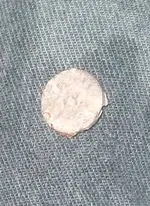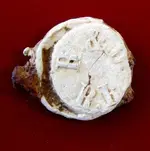olekyground said:
How does that work? And how old is it? THANKS GUYS!!
Oleky, It also could be a railroad cargo seal. Clean it up a little and see if any of the lettering on either side looks like the initials of a railroad company. Usually there will be an RR, as in SOU - RR or CG-RR or NS-RR, or R&D-R-R. If it is the other side will have the initials of the station agent that applied the seal. The KY on your seal is in the place that the station agent's initials normally would show up. Since you are in KY it is obviously local. It still could be a RR seal and the initials on the other side would tell the tale.
How it works? Ok, it is a lead disk that has two little holes in it. A wire is passed through one hole and then through a loop on a hasp or railroad car door latch. If a bag seal the wire would go around the closed top of the bag. Then the wire goes through the other hole in the lead seal. Wire forming a loop and is tightened firmly around the bag or just loose in a hasp or door latch.
The person applying the seal has a tool like a fancy pair of pliers. The jaws of it holds disks with the lettering engraved in them backwards. You clamp the lead in the sealing tool and crush it on the wire passing through the holes. This impresses the lettering into the seal and clamps the lead onto the wire.
To get in the rail car or open the top of the bag you have to cut the wire or destroy the lead seal. Either way a person on the receiving end of the shipment can tell if someone has opened the car door or opened the top of the bag and tampered with the contents.
If it is a railroad seal it may have some value to collectors of RR memorabilia. If it is from the Civil War era it can be considered a CW artifact. If it is from a Confederate operated RR then you got something neat.
I have attached a photo of a Richmond and Danville Rail Road seal that my hunting partner found on what we think is a CW skirmish site in a nearby county. The Richmond and Danville was the main railroad used by the Confederate Army to move goods and troops from the Capital to the armies deployed in the south.








 keep pluggin' away , it's only a matter of time before you land a BIG fish
keep pluggin' away , it's only a matter of time before you land a BIG fish 

